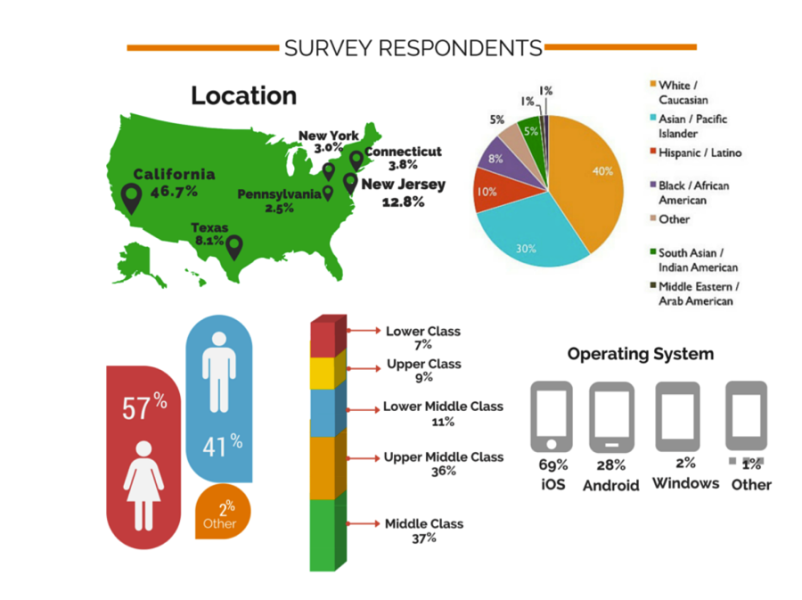Mobile commerce continues to grow at a prolific rate and has become a top boardroom topic. Why? The sheer growth opportunity that mobile e-commerce has to offer. In fact, when it comes to customer touch points, mobile traffic is starting to exceed desktop traffic. This year alone, global sales on mobile devices are expected to grow to over $280 billion (from $150B in 2014.)
Due to limitations in mobile web, many companies are seizing the opportunity by developing native mobile shopping apps. Companies across all industries are coming out with native shopping apps to create a more social and personalized experience for customers.
According to a recent Forbes article, mobile shopping app usage is growing faster than any other category of app. But how are millennials responding to the influx of mobile shopping apps? With the help of a few Stanford students, we surveyed over 1,600 millennials on their usage of native mobile apps. Here’s what we learned.
Out of the survey respondents, 47% claimed to have downloaded a mobile shopping app on their phone. Females were slightly more likely to have downloaded a mobile shopping than males and a majority of those polled were on iOS.

Retailers have an early adopter advantage: Amazon, Etsy, and Forever 21 are some of the most popular native apps with Millennials
But it isn’t just with Millennials. Retailers dominate most of the mobile shopping app usage across all age groups. Similar to the early growth of brick and mortar stores and desktop e-commerce sites, multi-brand retailers have a head start over single branded apps due to their large inventories. The one major exception is Forever 21, which might have strong usage because it’s a fast fashion brand with high inventory and sell-through.

Millennials download mobile shopping apps for a better user experience
What value do apps provide to millennials? Of the respondents that download a mobile shopping app, over half of them say they did so because the experience was better than the company’s mobile site.

A brand’s mobile shopping app must add value to the end consumer. For multi-brand retailers with lots of new product inventory—the value is an easy on-demand shopping experience. But every brand is unique in that there is no one size fit all solution. For instance, for some companies they might want to use their mobile apps to increase customer engagement, customer loyalty, or the in-store experience.
If building mobile shopping app is within your company’s mobile strategy, you should ask yourself what value you are looking to provide to your customer. While Millennials may download your app, it will have to prove its value if you want them to actually use it.
Special thanks to Scott Kazmierowicz for his help compiling the data.
This article was syndicated from Business 2 Community: What Mobile Shopping Apps Are Most Popular With Millennials?
More Technology & Innovation articles from Business 2 Community:




